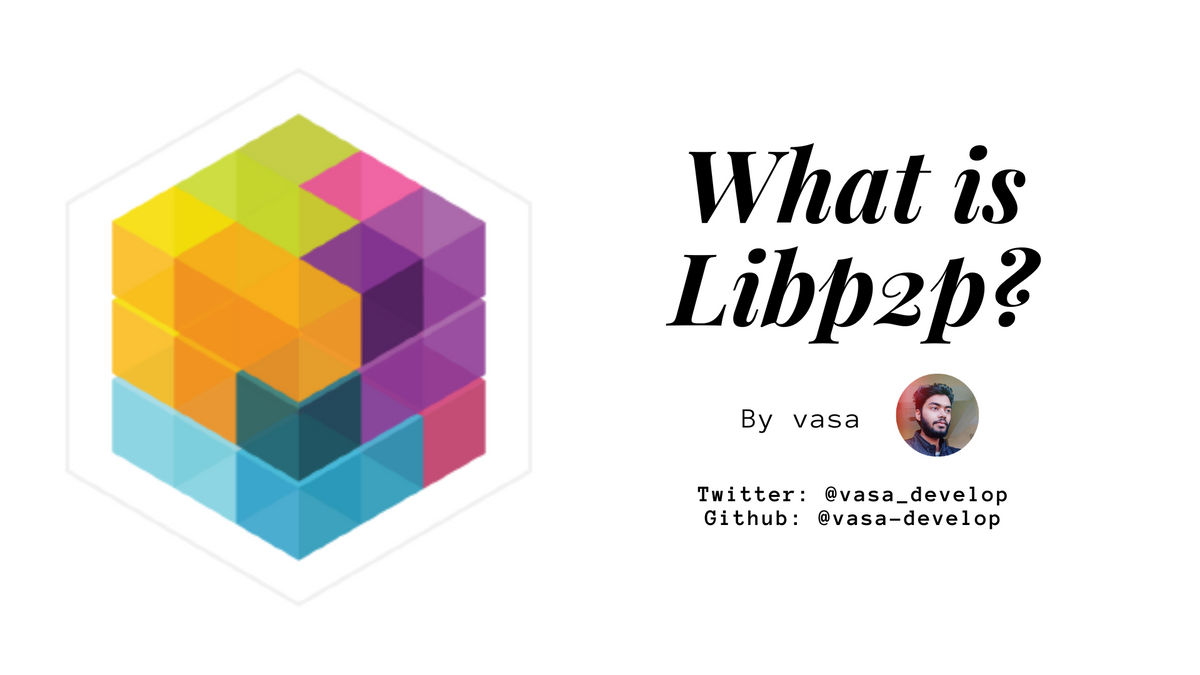What is Libp2p?
Good question! The one-liner pitch is that libp2p is a modular system of protocols, specifications and libraries that enable the development of peer-to-peer network applications.

Good question! The one-liner pitch is that libp2p is a modular system of protocols, specifications and libraries that enable the development of peer-to-peer network applications.
Peer-to-peer basics
There’s a lot to unpack in that one-liner! Let’s start with the last bit, “peer-to-peer network applications.” You may be here because you’re knee-deep in development of a peer-to-peer system and are looking for help. Likewise, you may be here because you’re just exploring the world of peer-to-peer networking for the first time. Either way, we ought to spend a minute defining our terms upfront, so we can have some shared vocabulary to build on.
A peer-to-peer network is one in which the participants (referred to as peers or nodes) communicate with one another directly, on more or less “equal footing”. This does not necessarily mean that all peers are identical; some may have different roles in the overall network. However, one of the defining characteristics of a peer-to-peer network is that they do not require a priviliged set of “servers” which behave completely differently from their “clients”, as is the case in the the predominant client/server model.
Because the definition of peer-to-peer networking is quite broad, many different kinds of systems have been built that all fall under the umbrella of “peer-to-peer”. The most culturally prominent examples are likely the file sharing networks like bittorrent, and, more recently, the proliferation of blockchain networks that communicate in a peer-to-peer fashion.
What problems can libp2p solve?
While peer-to-peer networks have many advantages over the client / server model, there are also challenges that are unique and require careful thought and practice to overcome. In our process of overcoming these challenges while building IPFS, we took care to build our solutions in a modular, composable way, into what is now libp2p. Although libp2p grew out of IPFS, it does not require or depend on IPFS, and today many projects(like Ethereum, OpenBazaar, Libra, etc.) use libp2p as their network transport layer. Together we can leverage our collective experience and solve these foundational problems in a way that benefits an entire ecosystem of developers and a world of users.
Here I’ll try to briefly outline the main problem areas that are addressed by libp2p today (early 2019). This is an ever-growing space, so don’t be surprised if things change over time.
Transport
At the foundation of libp2p is the transport layer, which is responsible for the actual transmission and receipt of data from one peer to another. There are many ways to send data across networks in use today, with more in development and still more yet to be designed. libp2p provides a simple interface that can be adapted to support existing and future protocols, allowing libp2p applications to operate in many different runtime and networking environments.
Identity
In a world with billions of networked devices, knowing who you’re talking to is key to secure and reliable communication. libp2p uses public key cryptography as the basis of peer identity, which serves two complementary purposes. First, it gives each peer a globally unique “name”, in the form of a PeerId. Second, the PeerId allows anyone to retrieve the public key for the identified peer, which enables secure communication between peers.
Security
It’s essential that we be able to send and receive data between peers securely, meaning that we can trust the identity of the peer we’re communicating with and that no third-party can read our conversation or alter it in-flight.
Libp2p supports “upgrading” a connection provided by a transport into a securely encrypted channel. The process is flexible, and can support multiple methods of encrypting communication. The current default is secio, with support for TLS 1.3 under development.
Peer Routing
When you want to send a message to another peer, you need two key pieces of information: their PeerId, and a way to locate them on the network to open a connection.
There are many cases where we only have the PeerId for the peer we want to contact, and we need a way to discover their network address. Peer routing is the process of discovering peer addresses by leveraging the knowledge of other peers.
In a peer routing system, a peer can either give us the address we need if they have it, or else send our inquiry to another peer who’s more likely to have the answer. As we contact more and more peers, we not only increase our chances of finding the peer we’re looking for, we build a more complete view of the network in our own routing tables, which enables us to answer routing queries from others.
The current stable implementation of peer routing in libp2p uses a distributed hash table to iteratively route requests closer to the desired PeerId using the Kademlia routing algorithm.
Content Discovery
In some systems, we care less about who we’re speaking with than we do about what they can offer us. For example, we may want some specific piece of data, but we don’t care who we get it from since we’re able to verify its integrity.
Libp2p provides a content routing interface for this purpose, with the primary stable implementation using the same Kademlia-based DHT as used in peer routing.
Messaging / PubSub
Sending messages to other peers is at the heart of most peer-to-peer systems, and pubsub (short for publish / subscribe) is a very useful pattern for sending a message to groups of interested receivers.
Libp2p defines a pubsub interface for sending messages to all peers subscribed to a given “topic”. The interface currently has two stable implementations; floodsub uses a very simple but inefficient “network flooding” strategy, and gossipsub defines an extensible gossip protocol. There is also active development in progress on episub, an extended gossipsub that is optimized for single source multicast and scenarios with a few fixed sources broadcasting to a large number of clients in a topic.
